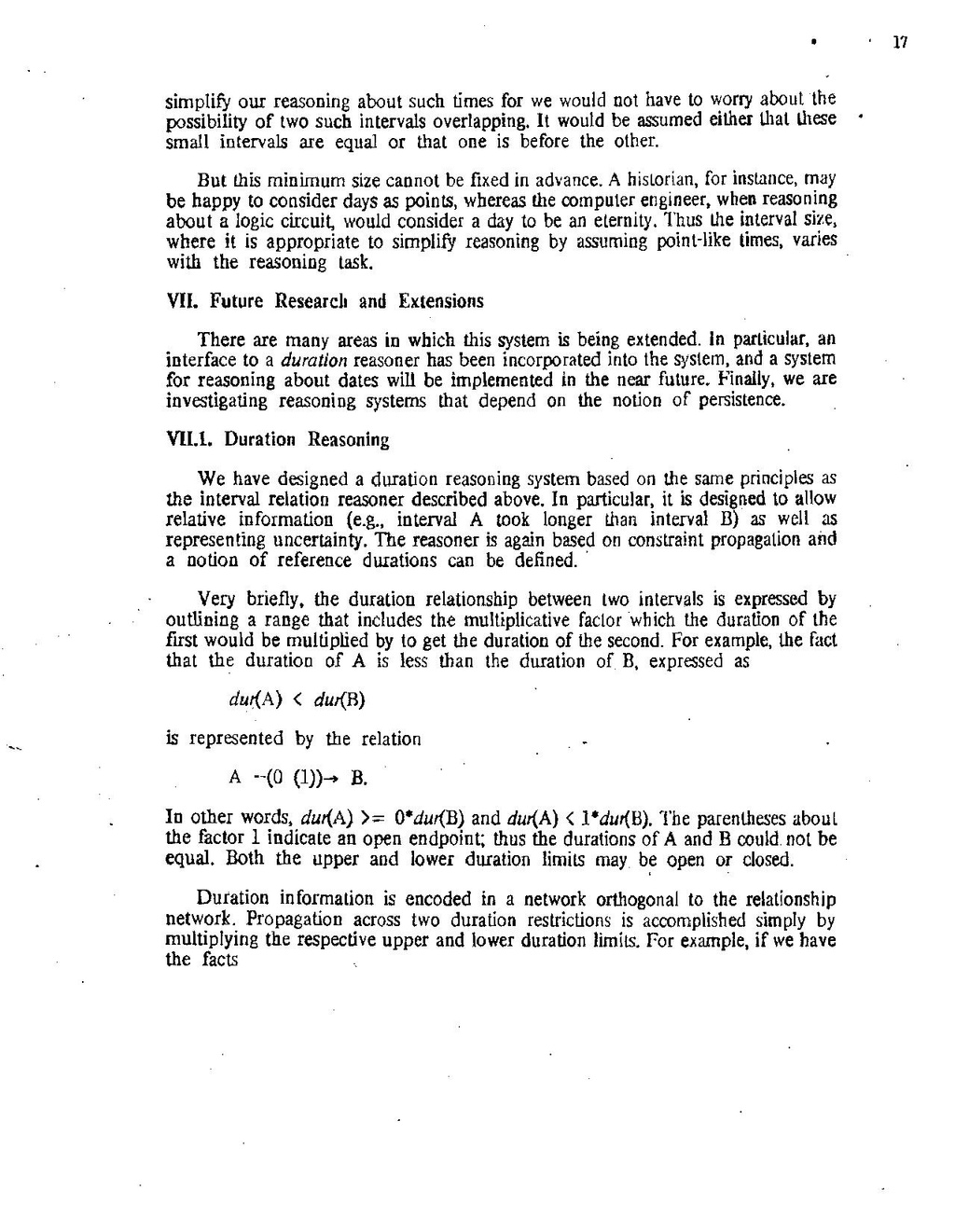simplify our reasoning about such times for we would not have to worry about the possibility of two such intervals overlapping. It would be assumed either what these small intervals are equal or that one is before the other.
But this minimum size cannot be fixed in advance. A historian, for instance, may be happy to consider days as points, whereas the computer engineer, when reasoning about a logic circuit, would consider a day to be an eternity. Thus the interval size, where it is appropriate to simplify reasoning by assuming point-like times, varies with the reasoning task.
VII. Future Research and Extensions
There are many areas in which this system is being extended. In particular, an interface to a duration reasoner has been incorporated into the system, and a system for reasoning about dates will be implemented in the near future. Finally, we are investigating reasoning systems that depend on the notion of persistence.
VII.1. Duration Reasoning
We have designed a duration reasoning system based on the same principles as the interval relation reasoner described above. In particular, it is designed to allow relative information (e.g., interval A took longer than interval B) as well as representing uncertainty. The reasoner is again based on constraint propagation and a notion of reference durations can be defined.
Very briefly, the duration relationship between two intervals is expressed by outlining a range that includes the multiplicative factor which the duration of the first would be multiplied by to get the duration of the second. For example, the fact that the duration of A is less than the duration of B, expressed as
dur(A) < dur(B)
is represented by the relation
A --(O (1))-- B.
In other words, dur(A) >= 0*du(B) and dur(A) < 1*du (B). The parentheses about the factor 1 indicate an open endpoint; thus the durations of A and B could not be equal. Both the upper and lower duration limits may be open or closed.
Duration information is encoded in a network orthogonal to the relationship network. Propagation across two duration restrictions is aco shed simply by multiplying the respective upper and lower duration limits. For example, if we have the facts
